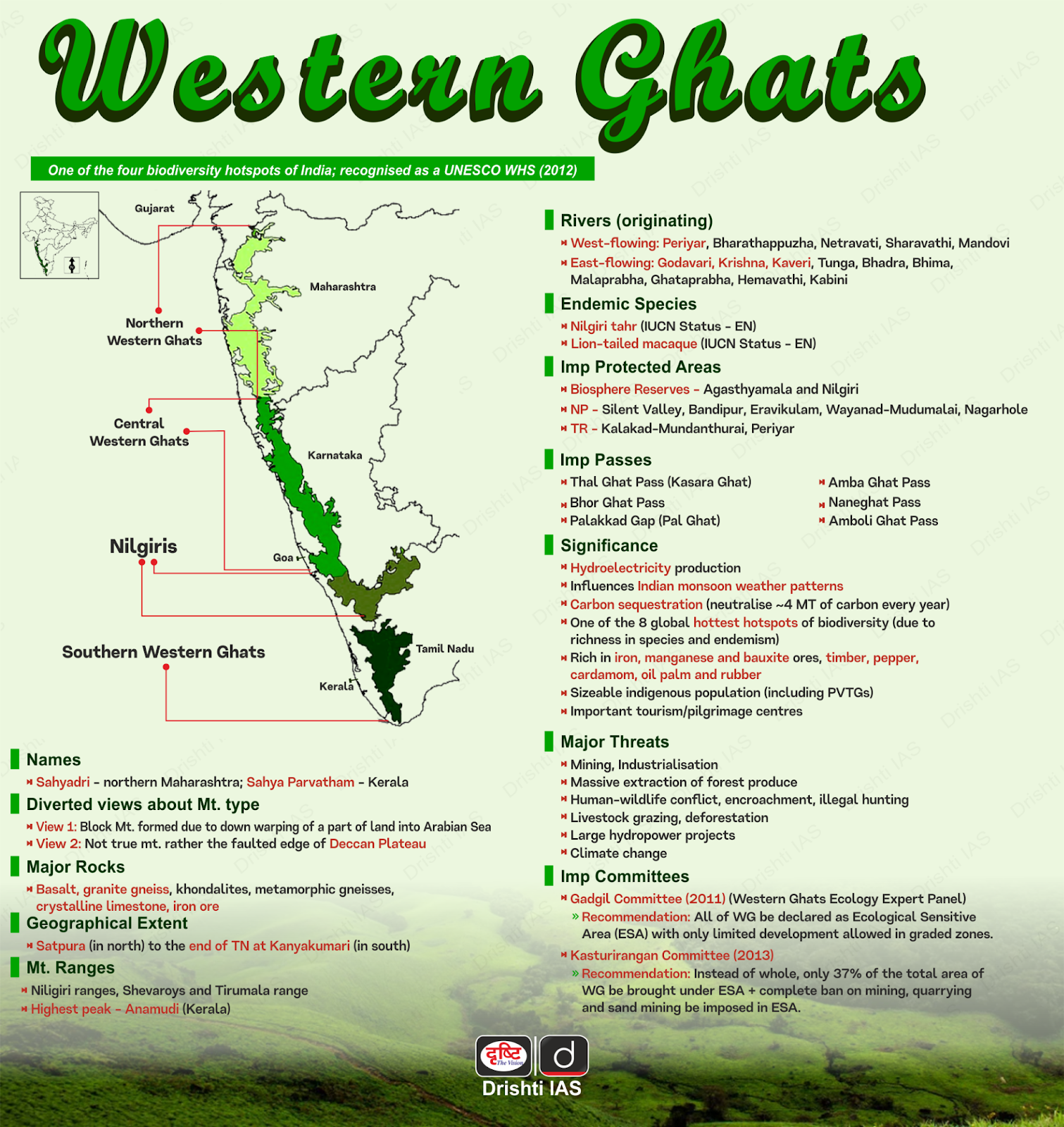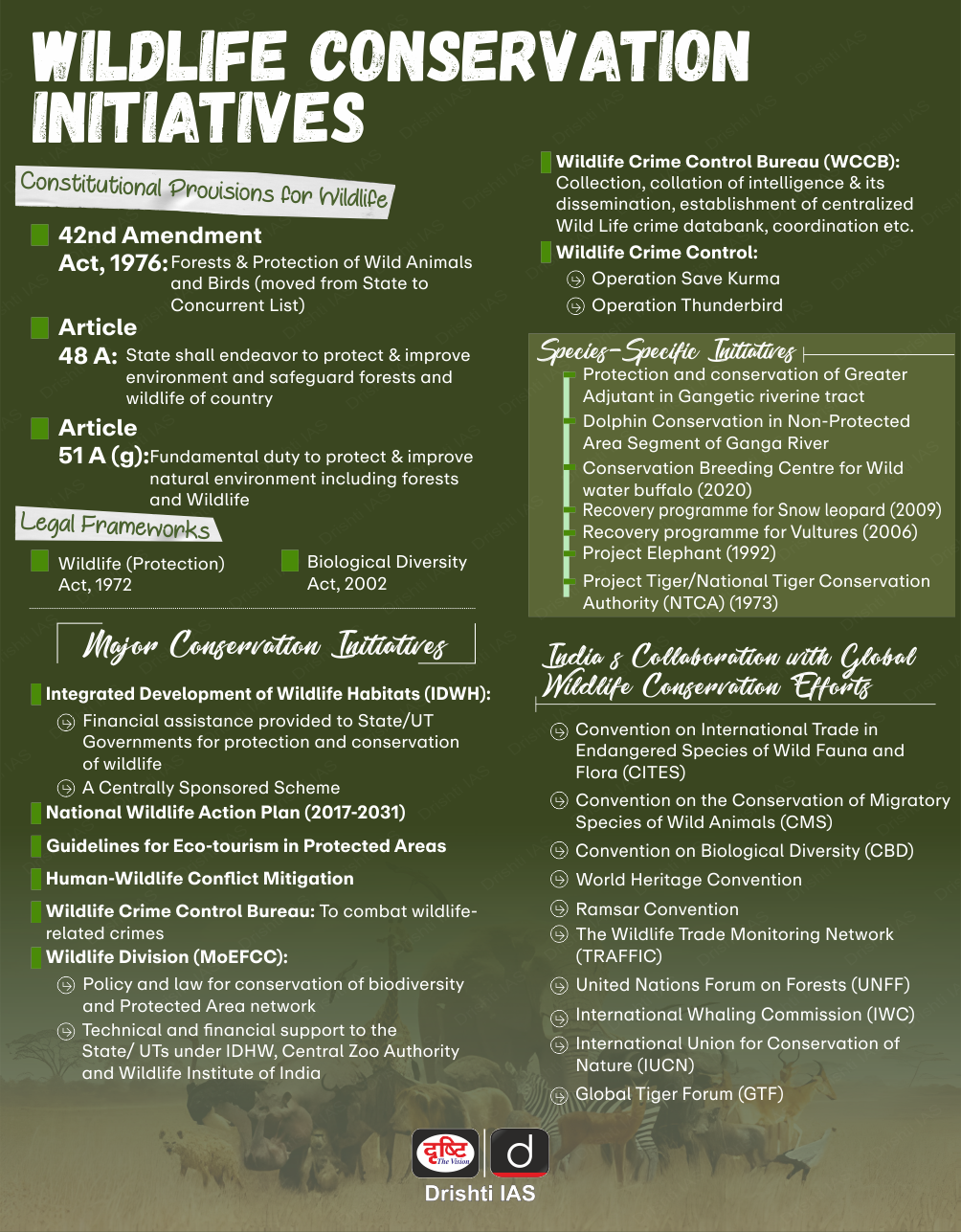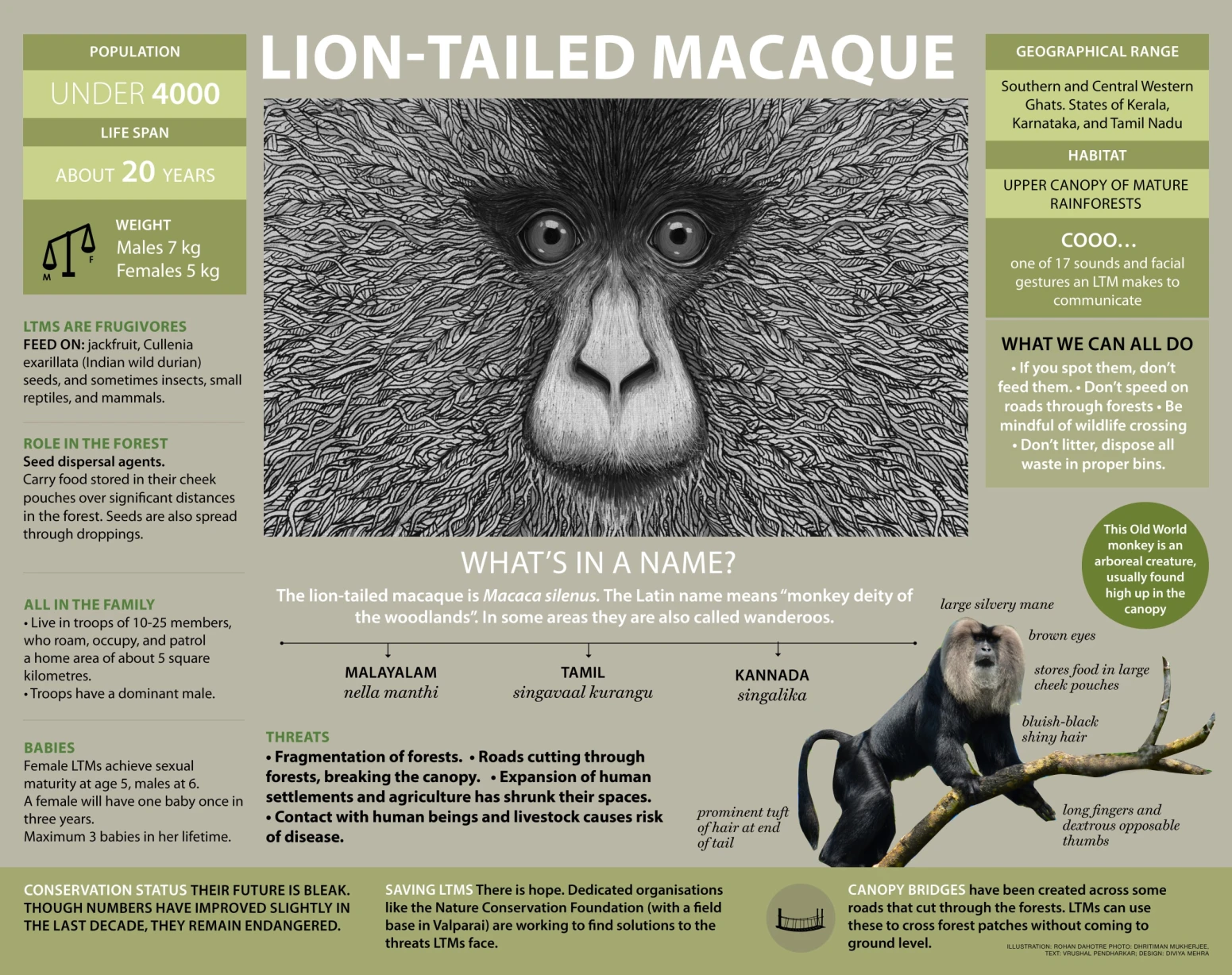Important Facts For Prelims
NBWL Approval to Sharavathi Hydroelectric Project
- 06 Aug 2025
- 7 min read
Sharavathi Pumped Storage Hydroelectric Project in Karnataka has got in-principle approval from the National Board for Wildlife (NBWL), despite ecological concerns over its impact on the Sharavathi Valley Lion-tailed Macaque Sanctuary in the Western Ghats.
- The project will now seek approval under the Forest Conservation Act, 1980, before returning for final NBWL approval.
Sharavathi Valley Wildlife Sanctuary
- It is located in the Sharavathi River Valley in Shivamogga District of Karnataka, spans 431.23 sq. km in the Western Ghats.
- Rich in flora and fauna, it houses flora species like Dhoopa, Gulmavu, and Nandi etc.
- Wildlife includes bison, spotted deer, tigers, panthers, and lion-tailed macaques.
- Attractions include Jog Falls, Linganamakki Reservoir, and diverse animal and bird species.
Sharavathi Pumped Storage Hydroelectric Project
- It is a proposed 2,000 MW project in Sharavathi Valley Lion-tailed Macaque Sanctuary, using pumped storage between Gerusoppa (lower) & Talakalale Dams (upper) via underground turbines for grid stability and renewable energy.
What is the National Board for Wildlife (NBWL)?
- About: NBWL is a statutory body constituted in 2003 under Section 5A of Wild Life (Protection) Act, 1972, replacing the Indian Board for Wildlife (1952) as an apex advisory body on wildlife conservation and forest development.
- Composition: The NBWL is a 47-member statutory board, chaired by the Prime Minister, with the Minister of Environment, Forest and Climate Change as the Vice Chairperson.
- Members include officials like the Chief of Army Staff, Defence Secretary, Expenditure Secretary, and 10 eminent conservationists nominated by the Central Government. The Additional Director General of Forests (Wildlife) serves as the Member-Secretary.
- Key Functions: It is an advisory body to the Central Government, responsible for guiding wildlife conservation policies, reviewing matters related to wildlife protection.
- It approves projects in and around protected areas (PAs) and eco-sensitive zones (within 10 km).
- Standing Committee: The Standing Committee is a smaller body under NBWL with up to 10 members, chaired by the Minister of Environment, Forest and Climate Change.
- It serves as a project clearance body, responsible for evaluating and approving proposals in protected areas and eco-sensitive zones, while the full NBWL focuses on broader policy decisions.
What are the Key Facts Related to Lion-Tailed Macaques?
- About: The Lion-tailed Macaque (Macaca silenus) is an old-world monkey species endemic to the Western Ghats of India.
- Also called the “wanderoo” or “beard ape”, it is known for its distinctive light-coloured mane surrounding its black face and chin.
- Key Features:
- Size: Among the smallest macaques; weighs 2–10 kg, body length 42–61 cm, tail length ~25 cm with a black tuft (larger in males).
- Appearance: Black fur with light-grey/silver mane around head and chin.
- Social Behaviour: Lives in hierarchical groups (10–20); shy and territorial. Dominant males produce loud ‘whoop’ calls to warn intruders.
- Activity Zone: Arboreal, spending time in the upper canopy of tropical moist evergreen forests.
- Habitat & Distribution:
- Endemic to Western Ghats, found in Karnataka, Kerala, Tamil Nadu; prefers undisturbed, continuous evergreen forest; highly sensitive to fragmentation.
- Found in regions like Anamalai Hills, Nelliyampathy, Nilambur Ghats, Sholayar, Gavi, Sabarimala, Vallimalai Hills, Agumbe, and Valparai plateau (Anamalai Tiger Reserve).
- Endemic to Western Ghats, found in Karnataka, Kerala, Tamil Nadu; prefers undisturbed, continuous evergreen forest; highly sensitive to fragmentation.
- Diet & Ecological Role: Primarily frugivorous, eats fruits, seeds, leaves, buds, insects, small vertebrates. It plays a key role in seed dispersal and forest ecosystem health.
- Threats: Over 99% habitat loss due to deforestation, agriculture, urbanisation which led to fragmentation, restricted movement and genetic flow.
- Human-wildlife conflict is increasing due to habitat degradation and food scarcity, causing behavioural changes.
- As per Kerala Forest Research Institute (KFRI) and University of Mysore (2024) report, only around 4,200 remain, just 25% of the original population.
- Conservation Status:
- IUCN Red List: Endangered
- CITES: Appendix I
- Wildlife (Protection) Act, 1972: Schedule I
Note: Strategic Habitat Use amid Human Pressure
- A study by the Centre for Wildlife Studies (CWS) in Silent Valley National Park, Kerala found that lion-tailed macaques adapt their behavior based on human presence.
- A troop in the buffer zone (more disturbed) used a smaller range and stayed mostly in the mid-canopy (94.2%), avoiding the ground.
- In contrast, a troop in the core zone (less disturbed) used a larger area and also used the forest floor, showing the species' ecological flexibility.
UPSC Civil Services Examination, Previous Year Questions (PYQs)
Prelims
Q. Which one of the following groups of animals belongs to the category of endangered species? (2012)
(a) Great Indian Bustard, Musk Deer, Red Panda and Asiatic Wild Ass
(b) Kashmir Stag, Cheetal, Blue Bull and Great Indian Bustard
(c) Snow Leopard, Swamp Deer, Rhesus Monkey and Saras (Crane)
(d) Lion-tailed Macaque, Blue Bull, Hanuman Langur and Cheetal
Ans: (a)
Q. If a particular plant species is placed under Schedule VI of the Wildlife Protection Act, 1972, what is the implication? (2020)
(a) A licence is required to cultivate that plant.
(b) Such a plant cannot be cultivated under any circumstances.
(c) It is a Genetically Modified crop plant.
(d) Such a plant is invasive and harmful to the ecosystem.
Ans: (a)









